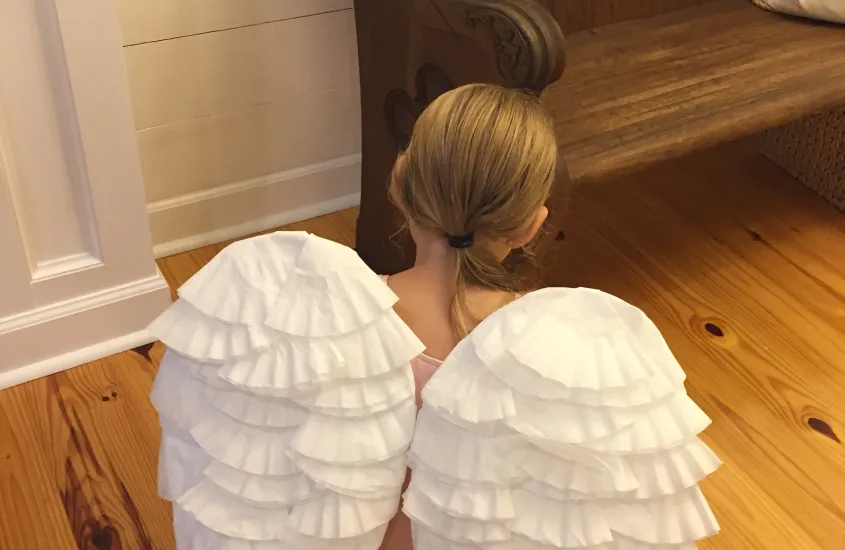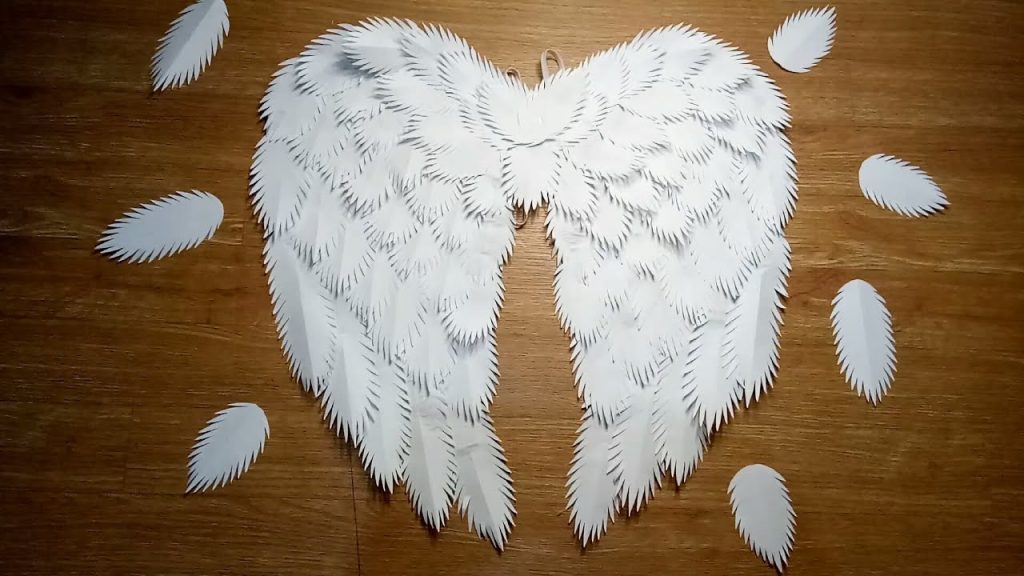Wings are a versatile costume element, adding a touch of magic to everything from fairies and butterflies to superheroes and angels. Whether you’re a seasoned crafter or a complete beginner, there’s a wing-making method out there to bring your costume dreams to life. This guide will take you through everything you need to know, from choosing materials and designing your wings to construction and finishing touches.

Taking Flight: Design Considerations
Before diving into crafting, brainstorm the type of wings you envision. Here are some questions to get you started:
- What kind of creature or character are the wings for? Are they delicate fairy wings, powerful eagle wings, or something more fantastical?
- What size should the wings be? Large, dramatic wings will make a statement, while smaller wings can be more practical for maneuvering in crowds. Consider the wearer’s mobility and the costume’s overall look.
- What materials will you use? Cardboard, fabric, foam, and even wire are all popular options, each with its own advantages and challenges.

Material Magic: Choosing the Right Supplies
The ideal materials for your wings depend on your design and budget. Here’s a rundown of popular choices:
- Cardboard: Cardboard is a budget-friendly option that’s perfect for creating sturdy bases for larger wings. It can be easily cut and decorated, but keep in mind that it’s not very flexible.
- Fabric: Fabric wings offer a lighter and more flowy option. They can be draped, pleated, or layered to create beautiful textures and shapes. However, fabric wings might require boning or internal structure for added support.
- Foam: Foam sheets are lightweight and come in various thicknesses, making them ideal for crafting three-dimensional wings. Foam can be cut into feather shapes or used to create a base for fabric wings.
- Wire: Wire can be used to create armatures, or internal frames, for wings. This is particularly useful for poseable wings or wings that need to hold their shape.
Taking Shape: Construction Techniques
Once you have your design and materials, it’s time to bring your wings to life! Here are some general construction techniques to consider:
- Cardboard Wings: Cardboard wings are perfect for beginners. Cut out two large wing shapes from cardboard and decorate them with paint, markers, feathers, or fabric scraps. You can attach them to the body using backpack straps or suspend them from shoulder harnesses made from ribbon or fabric.
- Fabric Wings: Fabric wings can be surprisingly simple to make. Drape a lightweight fabric over a cardboard or foam core, and secure it with hot glue or stitching. You can add details like ruffles, appliques, or painted designs. To create a more structured wing, sew boning channels into the fabric and insert lightweight plastic or boning strips.
- Foam Wings: Foam wings offer more flexibility for creating three-dimensional shapes. You can cut out individual feather shapes from foam sheets and layer them onto a base, or use thicker foam to carve out the entire wing shape.

Building the Support System: How to Wear Your Wings
Now that you have your stunning wings, you need a way to wear them comfortably and securely. Here are a few options:
- Backpack Straps: This is a simple and effective method for lightweight wings. Create straps from ribbon or fabric and attach them to the base of the wings. You can wear them like a backpack.
- Shoulder Harnesses: Shoulder harnesses offer more stability for larger wings. Cut strips of fabric or use pre-made harnesses, and attach them to the wings at points that distribute the weight evenly. You can add padding to the straps for additional comfort.
- Finger Loops or Dowels: For smaller wings, finger loops or dowel rods held in the hands can be a good option. Attach finger loops made from ribbon or elastic to the base of the wings, or create pockets for the wearer to hold dowel rods inserted into the wings.
Feathery Flair: Adding the Finishing Touches
The final step is to personalize your wings and make them truly shine. Here are some ideas for embellishments:
- Feathers: Real or faux feathers can add a realistic touch to bird-like wings. You can glue them directly onto the wing base or sew them onto fabric strips that are then attached to the wings.
- Paint and Glitter: Paint can be used to create intricate designs or add pops of color. Glitter glue or sparkly fabric can add a touch of magic.
- Ribbons and Trims: Ribbons, rickrack, and other trims can add definition and texture to your wings. Use them to create borders, outlines, or even patterns.
Lights and Electronics (Optional):
For an extra wow factor, consider incorporating battery-operated lights or glowing EL wire into your wing design. This can be a great way to add a futuristic or ethereal touch to your costume. However, working with electronics requires some additional skill and knowledge. Make sure to research safe battery placement and proper wiring techniques before attempting this step.

Taking Care of Your Wings: Storage and Maintenance
Once you’ve completed your masterpiece, proper storage will ensure your wings last for future costume adventures. Here are some tips:
- Cardboard Wings: Store flat or propped upright against a wall in a dry place. Cardboard can warp if it gets wet, so avoid damp basements or garages.
- Fabric Wings: If possible, hang your fabric wings on a wide hanger to prevent creasing. You can also fold them loosely and store them in a box.
- Foam Wings: Thicker foam wings can be stored flat, while thinner foam wings might curl slightly. Consider rolling them up loosely and storing them in a tube or canister.
Beyond the Basics: Wing-Making Techniques for Different Effects
While the core construction methods remain similar, there are ways to achieve different wing effects with your chosen materials. Here are some examples:
- Feathered Wings: To create realistic feathered wings, consider layering different sizes and colors of feathers. You can also trim or curl the feathers for added texture.
- Membranous Wings: For bat or dragonfly wings, use a sheer fabric stretched over a lightweight frame. You can add veins or other details with paint or fabric markers.
- Articulating Wings: For wings that move, create an armature using wire or lightweight plastic tubing. Attach the wing material to the armature at specific points to allow for flapping or bending motions.

A Final Flourish: Inspiration and Creativity
The beauty of crafting your own wings lies in the endless possibilities for personalization. Don’t be afraid to experiment with different materials, textures, and colors. Look online for costume inspiration, or brainstorm your own unique wing design. With a little creativity and these helpful tips, you can craft a pair of wings that will transform your next costume into something truly spectacular.
So, grab your materials, unleash your imagination, and get ready to take flight!


